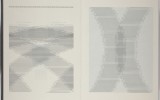SKOR Codex @ Anarchronism, Bruxelles (BE)



Anarchronism, 13 May – 14 June 2015
IMAL, center for digital cultures and technology, Bruxelles, Belgium
Anarchronism Time-disrupting machines
Anarchronism is a proposal to approach contemporary practices through a portmanteau word that might bring some confusion: the error, deliberate or not, of the anachronism meets the chaos and autonomy of anarchy/ism. The compression of the two words allows us to comprehend artworks that are themselves the results of compressions, suggesting temporal bifurcations materialised by artefacts that are difficult to date.
Notions such as media archaeology, retro-futurism, retromania, neo-analogue or post-internet put at stake time, technology and memory. Anarchronism belongs to the same constellation of concepts, without being the exact equivalent of any of those. This idea, and the resulting artworks, create situations that ruthlessly reconfigure the relations between digital and analogue, vernacular and retro, innovation and obsolescence, mass media and DIY approach to hardware, software and protocols.
The exhibition deals with the interactions between digital and memory; digital technology has been advertised as an everlasting mean to access data, but didn’t fulfil its mission. Some artists shake it up conceptually and aesthetically by capturing flux, disrupting time scales and creating new ways to encode, decode and to lose information.
Each presented work modifies, in its own way, the operating modes of the successive strata of digital and analogue technologies: the invention of a new long-term storage media in “1.8s”, or of new ways of encoding and decoding information in “SKOR Codex”; the return to less common uses of mass media (the audio cassette as a storage for code), mixed with contemporary elements in “LogForData”; the creation of new ways to read existing media, like the “REMAP” plotter reading a magnetic tape.
Another approach is to materialise digital information: the history of a Wikipedia page becomes a paper encyclopedia in “The Iraq War: A History of Wikipedia Changelogs”; a mp3 recording of the growl of a highly endangered Pyrenean brown bear is carved into the granite stele of “Stèle binaire”; in “Hexen 2.0”, the interlinked history of technologies and ideas appears both as diagrams and tarot cards. “The Weise7 in/compatible Laboratorium Archive” takes the opposite approach: the analogue form is dematerialised, through a wireless server hidden inside a book. Materiality is also a key aspect of “Copies non conformes”, going back and forth between digital and analogue in a recursive process of printing and scanning.
Finally, some of the exhibited artworks offer a change of perspective: by exploring forms of earth-based computation and programming, “Sketches for an earth computer” transforms the place of human in technology; “Refonte” suggests a prehistory of the future by transforming e-waste into rudimentary weapons; finally, in “Trace I”, the perspective literally changes through the mechanical scan of a bust.
Artists: Cécile Babiole (FR), projectsinge (FR/BE), Balint Bolygo (HU/UK), James Bridle (UK), Collectif Dardex (FR), David Guez (FR), Martin Howse (UK/DE), Flo Kaufmann (CH), Signal to Noise (UK), Société Anonyme (NL), Suzanne Treister (UK) en Weise 7 (DE).